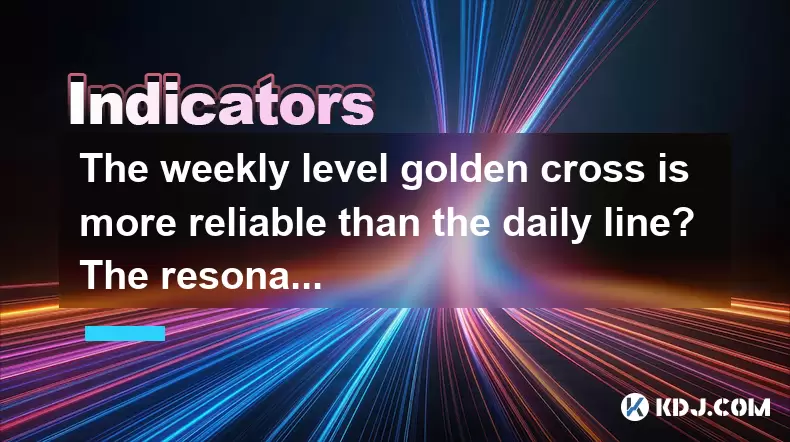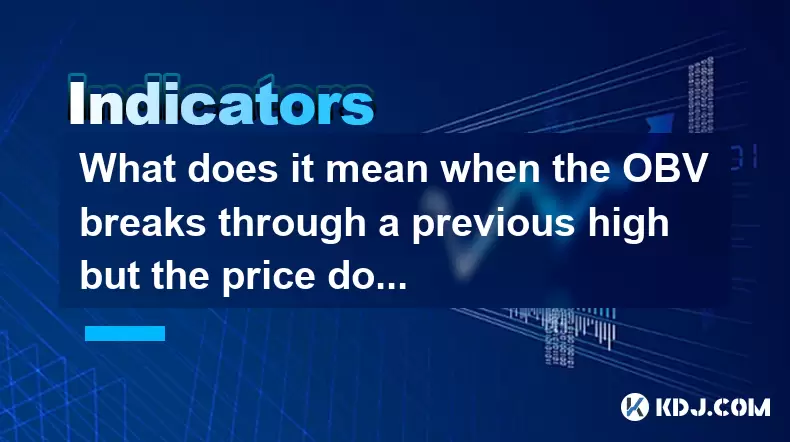-
 Bitcoin
Bitcoin $116700
0.24% -
 Ethereum
Ethereum $3973
4.34% -
 XRP
XRP $3.283
7.68% -
 Tether USDt
Tether USDt $1.000
0.01% -
 BNB
BNB $789.8
2.27% -
 Solana
Solana $176.2
3.31% -
 USDC
USDC $0.9999
0.00% -
 Dogecoin
Dogecoin $0.2238
5.14% -
 TRON
TRON $0.3389
-0.51% -
 Cardano
Cardano $0.7907
4.03% -
 Stellar
Stellar $0.4527
10.02% -
 Hyperliquid
Hyperliquid $41.07
4.27% -
 Sui
Sui $3.794
1.77% -
 Chainlink
Chainlink $19.49
10.40% -
 Bitcoin Cash
Bitcoin Cash $580.9
0.74% -
 Hedera
Hedera $0.2617
4.32% -
 Avalanche
Avalanche $23.41
3.67% -
 Ethena USDe
Ethena USDe $1.001
-0.03% -
 Litecoin
Litecoin $122.4
1.38% -
 Toncoin
Toncoin $3.364
1.49% -
 UNUS SED LEO
UNUS SED LEO $8.988
0.37% -
 Shiba Inu
Shiba Inu $0.00001295
2.82% -
 Uniswap
Uniswap $10.62
5.75% -
 Polkadot
Polkadot $3.922
4.46% -
 Dai
Dai $1.000
0.01% -
 Bitget Token
Bitget Token $4.494
2.15% -
 Monero
Monero $268.0
-1.30% -
 Cronos
Cronos $0.1523
3.68% -
 Pepe
Pepe $0.00001127
4.43% -
 Aave
Aave $285.4
4.85%
The weekly level golden cross is more reliable than the daily line? The resonance effect of different cycles
A weekly golden cross, where the 50-week MA crosses above the 200-week MA, is often seen as a more reliable bullish signal in crypto markets than daily crosses.
Jun 01, 2025 at 06:21 pm

The concept of a golden cross is a popular technical analysis tool used within the cryptocurrency market to signal potential bullish trends. A golden cross occurs when a shorter-term moving average crosses above a longer-term moving average, often indicating that a sustained upward trend may be starting. When discussing the reliability of a golden cross, it's essential to consider different time frames, such as daily and weekly levels, and understand the resonance effect across various cycles.
Understanding the Golden Cross
A golden cross is identified when a shorter-term moving average, such as the 50-day moving average, crosses above a longer-term moving average, like the 200-day moving average. This event is considered a strong buy signal by many traders, as it suggests that the asset's price is likely to continue rising. The reliability of this signal can vary depending on the time frame in which it occurs.
Daily vs. Weekly Golden Crosses
When comparing daily and weekly golden crosses, the key difference lies in the time frame over which the data is aggregated. A daily golden cross is based on daily price data and can be more sensitive to short-term market movements. Conversely, a weekly golden cross uses weekly price data, which can filter out short-term noise and provide a clearer picture of longer-term trends.
Reliability of Weekly Golden Crosses
The weekly golden cross is often considered more reliable than the daily golden cross for several reasons. Firstly, weekly data aggregates price movements over a longer period, reducing the impact of daily volatility and providing a smoother trend line. Secondly, a weekly golden cross signals a more sustained bullish trend, as it takes longer to form and is less likely to be a false signal caused by short-term market fluctuations.
Resonance Effect Across Different Cycles
The resonance effect refers to the alignment of signals across different time frames, which can increase the confidence in a trading decision. When a golden cross occurs on both the daily and weekly charts simultaneously, it is considered a stronger signal than if it were to occur on just one time frame. This alignment suggests that the bullish trend is supported by both short-term and long-term market dynamics.
Identifying a Weekly Golden Cross
To identify a weekly golden cross, traders should follow these steps:
- Select the appropriate moving averages: Typically, a 50-week moving average and a 200-week moving average are used for weekly charts.
- Plot the moving averages: Use a charting platform to plot these moving averages on the weekly chart of the cryptocurrency in question.
- Monitor for a crossover: Watch for the 50-week moving average to cross above the 200-week moving average. This event marks the formation of a weekly golden cross.
- Confirm the trend: After the crossover, ensure that the price continues to rise and the moving averages maintain their relative positions to confirm the bullish trend.
Practical Example of a Weekly Golden Cross
Let's consider a hypothetical example of a weekly golden cross on Bitcoin (BTC). Suppose the 50-week moving average of Bitcoin's price is at $30,000, while the 200-week moving average is at $25,000. If the price of Bitcoin continues to rise and the 50-week moving average crosses above the 200-week moving average, a weekly golden cross would be confirmed. Traders would then look for continued upward movement in the price to validate the signal.
Impact of Market Conditions on Golden Crosses
The reliability of a golden cross can also be influenced by prevailing market conditions. During periods of high volatility or market uncertainty, even a weekly golden cross may be less reliable. Conversely, in a stable market environment, the signal from a weekly golden cross is more likely to hold true, as it is less affected by short-term market noise.
Combining Golden Crosses with Other Indicators
To enhance the reliability of a weekly golden cross, traders often combine it with other technical indicators. For example, using Relative Strength Index (RSI) or Moving Average Convergence Divergence (MACD) can provide additional confirmation of a bullish trend. If both the weekly golden cross and these indicators suggest a strong upward trend, the signal becomes more compelling.
Trading Strategies Based on Weekly Golden Crosses
Traders can develop various strategies around a weekly golden cross. One common approach is to enter a long position after the confirmation of the golden cross and set a stop-loss order below the recent low to manage risk. Another strategy might involve scaling into a position over time, adding to the position as the price continues to rise and the bullish trend is validated.
Backtesting Weekly Golden Crosses
Backtesting is a crucial step in evaluating the effectiveness of a trading strategy based on a weekly golden cross. By applying the strategy to historical data, traders can assess how well the weekly golden cross would have performed in the past. This process can help refine entry and exit points and optimize the overall strategy.
Limitations of the Golden Cross
While the weekly golden cross is a valuable tool, it is not infallible. False signals can occur, especially in highly volatile markets. Additionally, the golden cross may lag behind actual market movements, as it is based on historical data. Therefore, it should be used in conjunction with other analysis methods to increase its reliability.
Frequently Asked Questions
Q: Can a golden cross occur on other time frames besides daily and weekly?
A: Yes, a golden cross can occur on various time frames, including hourly, 4-hour, and monthly charts. The principles remain the same, but the reliability and significance of the signal can vary depending on the time frame.
Q: How can traders avoid false signals from a weekly golden cross?
A: To avoid false signals, traders should look for confirmation from other technical indicators, such as RSI or MACD, and consider the overall market context. Additionally, waiting for a few weeks after the golden cross to ensure the trend continues can help filter out false signals.
Q: Is a weekly golden cross more suitable for long-term investors than short-term traders?
A: Yes, a weekly golden cross is generally more suitable for long-term investors, as it signals longer-term trends. Short-term traders might prefer to use daily or even shorter time frame golden crosses to capitalize on quicker market movements.
Q: How does the choice of moving averages affect the reliability of a weekly golden cross?
A: The choice of moving averages can significantly impact the reliability of a weekly golden cross. Using longer-term moving averages, such as the 50-week and 200-week, can provide a more stable signal, but it may also lag behind actual market movements. Shorter-term moving averages might be more responsive but could result in more false signals.
Disclaimer:info@kdj.com
The information provided is not trading advice. kdj.com does not assume any responsibility for any investments made based on the information provided in this article. Cryptocurrencies are highly volatile and it is highly recommended that you invest with caution after thorough research!
If you believe that the content used on this website infringes your copyright, please contact us immediately (info@kdj.com) and we will delete it promptly.
- Solana, Litecoin, Remittix: Unpacking the Latest Crypto Trends
- 2025-08-09 09:30:12
- Bitcoin Cash, AIXA Miner, and Daily Income: A New Yorker's Take
- 2025-08-09 09:30:12
- Trump, Crypto, and Public Companies: A New York Minute on Digital Finance
- 2025-08-09 09:50:12
- Trump's 401(k) Crypto Revolution: Is Your Retirement Ready?
- 2025-08-09 09:50:12
- Coinbase, DEX Trading, and Self-Custody: A New Era for Crypto?
- 2025-08-09 09:55:11
- Trump Family, Crypto Ventures, and Stablecoins: A New York Minute on USD1
- 2025-08-09 09:55:11
Related knowledge

What does it mean when the Williams' oscillator repeatedly hits bottoms but fails to rebound?
Aug 09,2025 at 09:28am
Understanding the Williams %R OscillatorThe Williams %R oscillator, developed by Larry Williams, is a momentum indicator used in technical analysis to...

What does it mean when the MACD-histogram turns from green to red but the DIF line fails to form a golden cross?
Aug 09,2025 at 10:15am
Understanding the MACD and Its ComponentsThe MACD (Moving Average Convergence Divergence) is a widely used technical analysis tool in the cryptocurren...

When the J line in the KDJ indicator suddenly turns downward after being continuously overbought, does it indicate a top?
Aug 09,2025 at 06:35am
Understanding the KDJ Indicator and Its ComponentsThe KDJ indicator is a momentum oscillator widely used in cryptocurrency technical analysis to ident...

What does it mean when the TRIX indicator suddenly diverges downward after a long period of convergence?
Aug 09,2025 at 12:56am
Understanding the TRIX Indicator in Cryptocurrency TradingThe TRIX indicator, or Triple Exponential Average, is a momentum oscillator used in technica...

What does it mean when the OBV breaks through a previous high but the price doesn't reach a new high?
Aug 09,2025 at 07:57am
Understanding the On-Balance Volume (OBV) IndicatorThe On-Balance Volume (OBV) is a technical analysis indicator that uses volume flow to predict chan...

Why is the rise limited after a MACD bottoming divergence?
Aug 09,2025 at 12:07am
Understanding MACD Bottoming Divergence in Cryptocurrency TradingThe MACD (Moving Average Convergence Divergence) is a widely used technical indicator...

What does it mean when the Williams' oscillator repeatedly hits bottoms but fails to rebound?
Aug 09,2025 at 09:28am
Understanding the Williams %R OscillatorThe Williams %R oscillator, developed by Larry Williams, is a momentum indicator used in technical analysis to...

What does it mean when the MACD-histogram turns from green to red but the DIF line fails to form a golden cross?
Aug 09,2025 at 10:15am
Understanding the MACD and Its ComponentsThe MACD (Moving Average Convergence Divergence) is a widely used technical analysis tool in the cryptocurren...

When the J line in the KDJ indicator suddenly turns downward after being continuously overbought, does it indicate a top?
Aug 09,2025 at 06:35am
Understanding the KDJ Indicator and Its ComponentsThe KDJ indicator is a momentum oscillator widely used in cryptocurrency technical analysis to ident...

What does it mean when the TRIX indicator suddenly diverges downward after a long period of convergence?
Aug 09,2025 at 12:56am
Understanding the TRIX Indicator in Cryptocurrency TradingThe TRIX indicator, or Triple Exponential Average, is a momentum oscillator used in technica...

What does it mean when the OBV breaks through a previous high but the price doesn't reach a new high?
Aug 09,2025 at 07:57am
Understanding the On-Balance Volume (OBV) IndicatorThe On-Balance Volume (OBV) is a technical analysis indicator that uses volume flow to predict chan...

Why is the rise limited after a MACD bottoming divergence?
Aug 09,2025 at 12:07am
Understanding MACD Bottoming Divergence in Cryptocurrency TradingThe MACD (Moving Average Convergence Divergence) is a widely used technical indicator...
See all articles

























































































